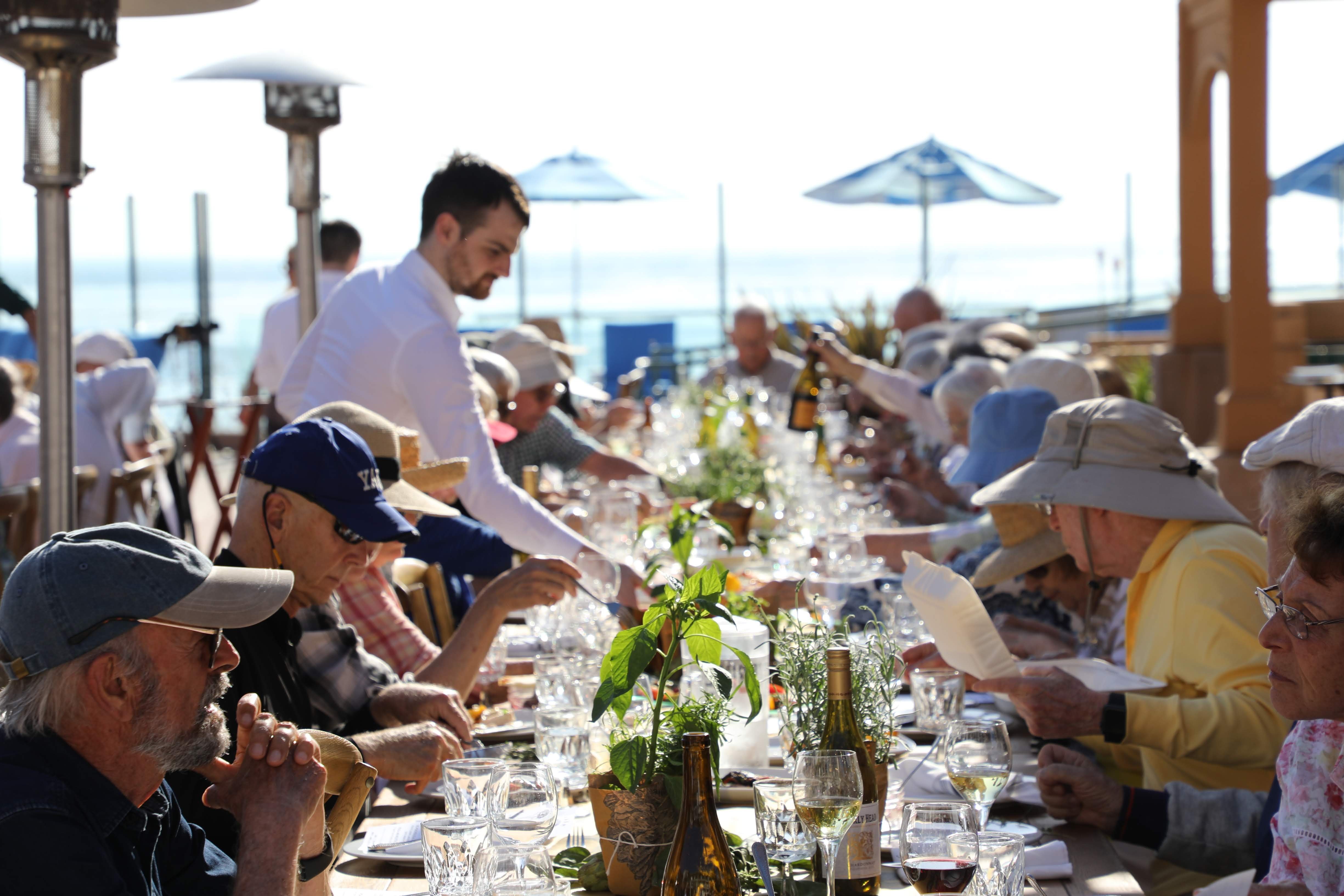
In July, we introduced a new dining experience in our communities with a pilot program in White Sands La Jolla. We asked Dennis Gradillas, vice president of operations, and Mary Platt, regional vice president, Morrison Community Living, to share some details about the pilot and what to expect in dining going forward.
Q: What are we doing for the pilot program at White Sands?
Mary: For the pilot at White Sands, we are testing out:
- a new menu in all restaurants and levels of living – implemented over the next month to six weeks
- a new menu for all meals featuring fresh local produce and seasonal selections
- lunch and dinner expo station cooking, where we cook to order special entrees
- new messaging (calling out farm names and using icons for diets), featuring a refreshed look for our menus and signage
- new pulse survey and comments cards to collect resident feedback
- light refresh of the serving line in Water’s Edge, which encourages more fresh batch cooking
- testing our Bon Appétit database of recipes and menus
- building recipes and menus to meet clinical service needs
Dennis: The intent is to build out a blueprint so we can implement the various Bon Appétit pillars of service throughout all HumanGood communities. The pilot will help us determine what is scalable for each community. The experience learned from White Sands will also be implemented and refined at the Los Gatos pilot. At the conclusion of the Los Gatos pilot, I would expect we would have enough data to determine what pillars and at what cost can be implemented across the rest of the organization.
Q: What did we do as part of the pilot kickoff and what were the residents’ reactions?
Mary: We hosted a Farm 2 Table kickoff dinner on the patio and then unveiled our new look and feel the next morning for breakfast. The response so far has been overwhelmingly positive. Residents and team members are sharing feedback and suggestions daily and we are incorporating their ideas into the meal service and placement of items for their convenience. Understanding something as simple as napkin placement is important for their convenience.
Dennis: I had dinner with a group of residents that evening. The family-style dinner was a huge hit; the response to the food was outstanding. The residents I spoke with were very excited about sustainable food sources and the environmental impact that is achieved when working with local farmers. I also received excellent feedback on the sustainability wall in the bistro that tells the Bon Appétit story.
Q: How long will the White Sands pilot last?
Mary: We anticipate the pilot to last for four to six months. We have tons of data to gather: resident responses, tracking of costs, staffing adjustments, buying habits, flow and ease of service, production and waste, sourcing to name a few.
Dennis: Mary spoke to this, but it is important to stress this is a pilot for all levels of living, how we incorporate the same menu throughout the community. As part of the pilot, we need to test technology that helps us become more efficient. For example, the use of tablets or kiosks for residents when they are ordering meals.
We are also looking at design concepts for the higher levels of living that include the dining rooms and food production. Building out these areas in the higher levels is important to the overall dining program. I believe if we can test the concepts now at White Sands, we can fail fast and start over, and move quickly once we prove the concepts.
Mary: Dennis said it well—we need to build out models in all levels of living in each pilot that are well received. We need to support person-directed care in the building space we have and provide a consistently great, easy to execute, dining experience
Q: How will the pilot program help us provide an innovative dining strategy for HumanGood communities? For example, will it help us test ways we can introduce new menu items or sourcing methods, or training for dining team members, etc.?
Mary: The pilot will do all those things, and more. The pilot will help us identify skill sets and training for management that is important to our model; evaluate how important meal service is to marketing the community; what are cost ramifications of trying to increase seasonality and locality into our menus.
It will also tell us how we learn to work differently from a clinical and management standpoint so that we can be flexible in implementing a “cycle-less cycle menu”; and how we can create menus that are flexible enough to meet the wants of adventurous, health-conscious diners who still want homestyle cooking.
Q: What are you most excited to see happen from the pilot?
Mary: The energy of the team members in wanting to learn; the beautiful plates of colorful food residents are serving themselves; the possibility of moving towards more plant-based eating habits with smaller reliance on meat protein; reduction of waste; the idea of family-style meals to understand how the model can be adapted to fit other communities that have different style of service and venues.
Dennis: I’m looking forward to everything that we can learn from this pilot program: can we bring this experience to other communities and successfully implement across all levels of living at a marginal cost. Can all residents truly enjoy the same experience? I am also interested in seeing how redesigning the dining experience will impact other areas of our business, from occupancy to overall resident satisfaction. There is a lot we can learn from this and I’m excited to share it going forward.


.png?width=260&height=56&name=new-hg-logo-rev-with-registered-mark%20(2).png)